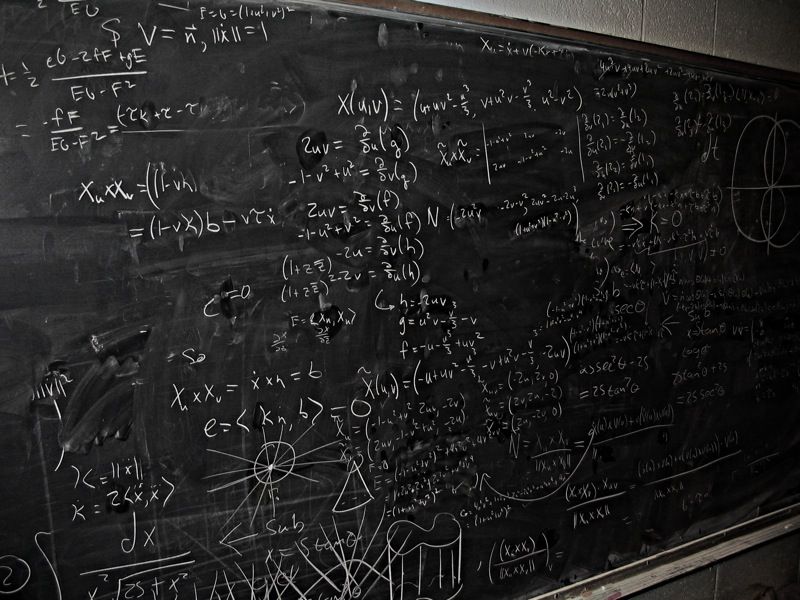Harkness Style Math at Phillips Exeter Academy

Phillips Exeter Academy is a private boarding school in Exeter, New Hampshire. One of the things we are best known for is our Harkness learning method. Basically, this means that classes are conducted around an oval “Harkness table” rather than lecture style. All classes are discussion based and student led. Many schools, especially prep schools, use this style of learning for English, History, and Language classes. However, Exeter is somewhat unique because they use Harkness in ALL of their classes, including arts, science, and math.
It is easy to imagine how Harkness works in an English or history class. The students do the reading, then come to class to discuss it. It is also easy to imagine why small immersive language classes would be more effective than lectures where students don’t actively practice with each other. However, it is much harder to imagine how this works for a math class. How do you learn the concepts? How can you “discuss” mathematical equations? In this post, I will do my best to explain how this works, and why I believe it is the best way to learn math.
To start, Exeter does not use a textbook. Yes, you read that right. There is no textbook that gives you all the equations, explanations, and theories. Instead, there is a workbook with problems written by the Exeter math department. These problems are meant to guide students through mathematical concepts so that they gain a thorough and deep understanding of the theory and applications of each topic. A great majority (almost all) of the problems in the book are word problems. They phrase the problems so that you will almost immediately have an idea of why this topic is necessary and applicable to the real world. As an engineer who always preferred applied mathematics to abstract concepts, this allowed me to engage with the topics on a deeper level.
Since the problems are written by the highly talented Faculty at Exeter, they are tailored to the students. There are names and characters in the word problems that are repeated often enough that they begin to form a story. Most students have a love/hate relationship with “Alex the Geologist” problems, which show up a few times in each math level. There are lots of fun jokes hidden in the books, especially in the glossary at the end. It is obvious that the teachers had a fun time writing the book, which makes the problems much more enjoyable to the average student.
Exeter is different from a typical high school in that they do not separate the levels definitively into Algebra, Geometry, Trigonometry, etc. There is definitely a focus on those subjects at different levels, but it also recognizes that there are very important and useful overlaps in the topics, so many of them are learned concurrently. The math workbooks are separate into Math 1, Math 2, Math 3, Math 4, Discrete Mathematics, and Multivariable Calculus. All of these problem sets are available for free viewing and downloading on Exeter’s website. (https://www.exeter.edu/academics/72_6539.aspx)
If you go to Exeter, you will never have busy work in math ever again. You will not mindlessly repeat problems to practice equations you already know. Every problem builds on the last one. I never felt like I was wasting my time on my homework, because every single problem had something new to teach. I view this as a positive thing, but if you do not like to do your homework thoroughly, you may find it very difficult to keep up with Harkness math. Many students do get away with doing very little of their math homework, but with Harkness learning the preparation you do for class is every bit as important as what you do in the classroom.
On that note, you are probably wondering what a typical class looks like. The basic structure is that you are assigned 6 to 12 problems (depending on length) that you have never seen before, and you solve them whatever way you can. Then, in class the students put the problems on the board and explain the solutions to each other. All the math classrooms have a lot of board space (2-3 walls of whiteboard or blackboard) and a Harkness table in the middle.
Each teacher has their own way of organizing the class time, but I will explain what I have found to be the most common. At the beginning of class, as students arrive, they each go to the board to put up a solution from the homework. It is usually mostly left up to the students to make sure that every problem is put up, and that every student helped to put a problem up. Usually there are more students than problems, so people will work together to put them up, especially longer problems. Then, after all the problems are up, the student who wrote the solution will go to the board and explain their solution. As a class, the students will discuss the solution, other possible solutions, any mistakes, and any questions other students have.
This discussion is the crux of Harkness Math. Often the solution is straightforward and well explained so all the other students just nod and move on. But for a difficult problem, this could take a very long time. Students are encouraged to keep digging into a problem until everyone understands it thoroughly and deeply. If a student did it another way and got a different answer, they might put it up as well to see where they went wrong. If the person who put it on the board made a mistake, which happens often, the class will work together to see where things went wrong and fix the mistake. Rather than teaching one idea at a time, several topics are being built up at the same time, usually starting with a concrete simple example and building up to a generalized theory or equation over the course of a few classes or weeks. So, from class to class, some things are totally new and some are familiar. There are a few tests every term to make sure that students got the key concepts and know how to solve each kind of problem.
You may notice that I haven’t really mentioned the teacher’s role in this. In my opinion, they are mostly facilitators of this learning process. However, the quality of the explanations that the teacher adds to tie ideas together can make or break a class. Some teachers assign specific people to put up problems, or have students solve things on the spot, or add very detailed explanations. Every teacher has their own style, but discussion and true non-superficial understanding of concepts are at the core of all Harkness education.
If you can handle the rigor of figuring out problems on your own, and the responsibility of explaining the concepts to your peers, Exeter Harkness math is the best possible way to really understand mathematics. A textbook with equations could never help you understand something as well as figuring it out for yourself and seeing the applications and origins of each topic. If you need explanations handed to you on a plate (which is perfectly acceptable) then Harkness math will wear your down and cause you a lot of distress. But if you are self-motivated, interested in real understanding, and willing to get things wrong a lot of the time, Exeter is the only place you can get a high school math education this good.
Image credit: Clayton Shonkwiler
Copyright: https://creativecommons.org/licenses/by/2.0/
